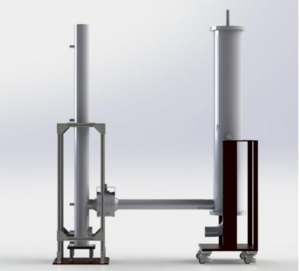
Among the Next Generation Nuclear Plant (NGNP) designs, the High-Temperature Gas-cooled Reactors (HTGRs) are very attractive, due to their inherent safety features, high power conversion efficiency, and potential of providing high-temperature process heat. Several experimental research efforts have been dedicated in the past to investigate accident scenarios associated with the HTGRs, such as air-ingressor depressurized conduction cooldown (DCC) event. The DCC typically involves some break in the pressure boundary of the reactor system resulting in a depressurization. The DCC can be divided into three distinct stages: (1) depressurization, (2) gas-ingress (if present), and (3) natural circulation. The gas ingress stage can be further divided into gas-ingress by exchange flow, gas-ingress by molecular diffusion, and gas-ingress by inflow due to coolant contraction during the subsequent cooldown phase. The extent to which the prototypical plant experiences, if at all, gas-ingress by exchange flow or diffusion depends on the location and the size of the break. The Stratified Flow Separate Effects Test Facility (SFSETF)has been operated at OSU with one of the main goals to experimentally determine the onset time of global free convection following DCC. The goal of this project is to perform Computational Fluid Dynamics (CFD) verification and validation(V&V) study of the selected tests performed at the SFSETF.
| Attachment | Size |
|---|---|
| 299.03 KB |

